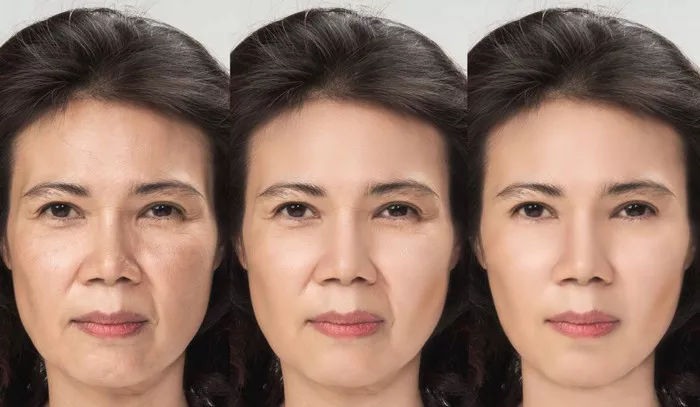As we age, the skin on our face begins to sag and lose elasticity. This can cause us to look older and more tired than we feel. While there are a variety of facelift procedures available, one option that has gained popularity in recent years is the ponytail facelift. Today, we’ll explore what a ponytail facelift is, how it works, and who may benefit from this procedure.
What is a Ponytail Facelift?
A ponytail facelift is a non-surgical procedure that involves the use of specialized threads to lift and tighten the skin. The threads used in this procedure are typically made of polydioxanone (PDO), a biodegradable material that has been used in medical procedures for decades.
During the procedure, the threads are inserted into the skin using a thin needle. Once the threads are in place, they are gently pulled to lift the skin and create a more youthful and refreshed appearance. The threads also stimulate collagen production, which can further improve the skin’s appearance over time.
The procedure is called a “ponytail facelift” because the threads are often inserted in a “V” shape, similar to the way a ponytail is pulled back. This technique can provide a more natural-looking lift and can be customized to address specific areas of concern, such as the jowls, cheeks, or neck.
What Are the Benefits of a Ponytail Facelift?
One of the main benefits of a ponytail facelift is that it is a minimally invasive procedure that can provide impressive results with little to no downtime. Unlike traditional facelifts, which require general anesthesia and can take several weeks to recover from, a ponytail facelift can typically be performed using local anesthesia and involves minimal recovery time.
Other benefits of a ponytail facelift include:
- Immediate results: Unlike other non-surgical treatments that may take several weeks to see results, a ponytail facelift provides immediate lifting and tightening of the skin.
- Customizable: The procedure can be customized to address specific areas of concern, providing a more tailored approach to facial rejuvenation.
- Long-lasting: The threads used in a ponytail facelift can provide lifting and tightening effects for several months to a year, and the collagen-stimulating effects can provide longer-lasting results.
How Does a Ponytail Facelift Work?
- Thread Lift Procedure
During a ponytail facelift procedure, the patient is typically given a local anesthetic to numb the treatment area. The surgeon then makes small incisions in the skin and inserts threads or sutures through a needle into the subcutaneous tissue beneath the skin. The threads are made of a special material that provides traction and support to the sagging tissues. The threads may be barbed or smooth, depending on the technique used by the surgeon.
Once the threads are in place, the surgeon gently pulls them to lift and reposition the facial tissues into a more youthful position. The threads are then secured in place and trimmed, and the incisions are closed with sutures.
- Types of Threads
There are several different types of threads that can be used in a ponytail facelift procedure. The most commonly used threads are made of polydioxanone (PDO), which is a biocompatible material that is commonly used in surgical sutures. PDO threads are absorbed by the body over time, which means that the lifting effect will gradually diminish. Other types of threads, such as polylactic acid (PLA) threads, are designed to stimulate collagen production and may provide longer-lasting results.
Who is a Good Candidate for a Ponytail Facelift?
A ponytail facelift may be a good option for people who have mild to moderate signs of aging in the lower face and neck, such as sagging skin and wrinkles. It may also be appropriate for people who are looking for a less invasive alternative to a traditional facelift.
However, not everyone is a good candidate for this procedure. People with significant sagging or excess skin may require a more extensive facelift procedure to achieve the desired results. Additionally, people with certain medical conditions, such as bleeding disorders or uncontrolled high blood pressure, may not be good candidates for surgery.
Consultation with a qualified cosmetic surgeon is the best way to determine if a ponytail facelift is the right choice for you.
Potential Risks and Complications
While ponytail facelifts are considered a less invasive alternative to traditional facelifts, they still carry certain risks and potential complications. Some of these include:
- Infection:
Any time a procedure involves incisions, there is a risk of infection. It is important to follow all aftercare instructions provided by the surgeon to minimize this risk.
- Nerve Damage:
Because the ponytail facelift involves tightening the skin and underlying tissue, there is a risk of nerve damage. This can result in numbness or tingling in the face, and in rare cases, permanent nerve damage.
- Hematoma:
A hematoma is a collection of blood outside of the blood vessels. This can occur after any surgery and may require additional treatment to resolve.
- Scarring:
While the incisions made during a ponytail facelift are small, there is still a risk of visible scarring. The location and severity of scarring will vary depending on the individual and the technique used by the surgeon.
- Dissatisfaction with Results:
As with any cosmetic procedure, there is a risk that the patient will not be satisfied with the results. It is important for patients to have realistic expectations and to discuss their desired outcomes with the surgeon prior to the procedure.
Conclusion
A ponytail facelift is a minimally invasive procedure that can help to tighten and rejuvenate the lower face and neck. It may be a good option for people who have mild to moderate signs of aging and are looking for a less extensive alternative to a traditional facelift.
If you’re considering a ponytail facelift or any other cosmetic procedure, be sure to do your research and choose a qualified and experienced surgeon. With the right preparation and care, you can achieve the youthful, refreshed look you desire.


